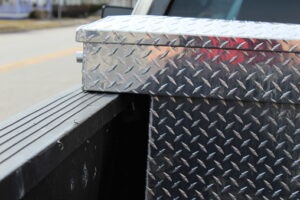The forklift warning light symbol is both mysterious and important in today’s automobile world. Additionally, our car dashboards are covered in a variety of symbols and indications. This little forklift truck silhouette is tucked away among the assortment of dashboard icons, which may confuse some drivers. What precisely does it denote, and why does it suddenly become visible, illuminating our cars with a subtle but substantial glow?

This article sets out on a quest to clarify the meaning and intent of the forklift warning light symbol. Understanding its meaning is essential for every motorist because it is a symbol that frequently causes worry and curiosity. We will explore the significance, causes, and solutions of this warning light. Additionally, we’ll help you understand the complexities involved. As well as will also provide you with the information you need to drive safely and confidently. Let’s set out on a mission to decipher the meaning of the forklift warning light symbol and learn the lessons it can teach every driver.
Table of Contents
Forklift Warning Light Symbol: What Does It Mean?
The forklift warning light icon, which is frequently seen on a car’s dashboard, is an important signal that conveys potential problems with the gearbox system of the vehicle. Drivers can use this emblem, which often looks like a miniature forklift truck, as an early warning system. Its illumination denotes a number of issues, such as low gearbox fluid levels, gearbox overheating, gearbox system errors, or even electrical issues.
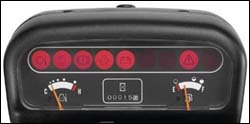
For safe driving, it is essential to comprehend what this symbol means. It encourages drivers to look into and take care of transmission-related problems as soon as possible. Ignoring this warning signal may result in more serious issues. Moreover, by endangering the performance of the car and the safety of its occupants.
What Are The Causes Of The Forklift Warning Light?
Although confusing, the sign for the forklift warning light is an essential communication tool. Knowing its causes ensures safe driving and long-lasting vehicles.
1. Low Transmission Fluid:
Low gearbox fluid is one typical reason why the forklift warning light illuminates. Transmission fluid is crucial for effortless gear changes and cooling down. Your car’s gearbox system may suffer if it’s low, which would cause this warning.
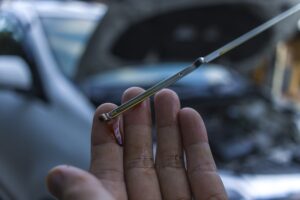
2. Overheating In The Gearbox:
Heavy loads or towing are just two of the causes of overheating. The forklift symbol may appear when the gearbox overheats to alert you to the problem.
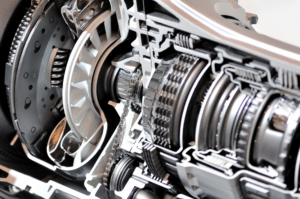
3. Transmission Errors:
The gearbox system’s more complicated problems, such as broken solenoids or sensors, may also cause the forklift warning light to illuminate.

4. Electrical Issues:
The alert light may occasionally turn on due to a minor electrical issue. A sensor problem or a loose cable could be to blame for this.

Solutions To Fix The Forklift Warning
The forklift warning light sign must be addressed methodically. We’ll look at some practical solutions in the section that follows to address this mysterious dashboard signal.
Step 1: Stop Safely
Don’t freak out if you see the forklift caution light. Locate a secure spot to stop, such as a parking lot or the side of the road. Stop your car’s engine.

Step 2: Verify The Transmission Fluid
Locate the gearbox fluid dipstick by opening the hood of your automobile (the owner’s manual for your vehicle can help). After removing it, cleaning it, reinserting it, and pulling it out one more. Verify the liquid level. You’ll need to add more gearbox fluid if it’s low. In your car’s manual, you can discover the appropriate kind.
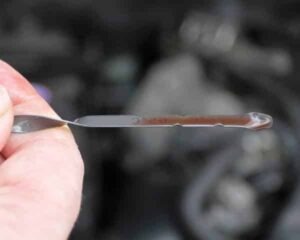
Step 3: Add Transmission Fluid
Pour the gearbox fluid into the dipstick tube using a funnel. Add a small amount at a time and use the dipstick to check the level once again. Just add enough to bring the level to the suggested level; don’t overfill.

Step 4: Let It Cool
Turn off your car and wait for it to cool down if the forklift light appears because your gearbox is too hot (perhaps from towing or driving in hot weather). There may be a 30-minute or longer delay.
Step 5: Restart Your Vehicle
Start your car after adding gearbox fluid or after letting it cool down. Verify if the warning light on the forklift is still on. Great if it’s gone! The problem may have been resolved.
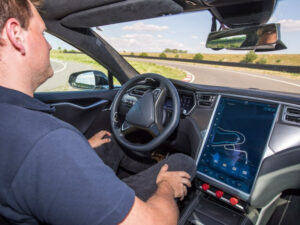
Step 6: Seek Professional Assistance If The Light Persists.
After doing the aforementioned measures, if the warning light is still on, it’s necessary to contact a mechanic or go to an auto repair facility. Your gearbox may have a more serious issue that requires professional help.

Therefore, do not disregard the forklift caution light, but also do not become alarmed. By following these procedures, you can either fix the problem on your own or acquire the assistance you require to maintain your automobile operating securely and smoothly.
Can I Drive My Car With This Warning Light?
If your car’s forklift warning light comes on, it’s as if your vehicle is saying, ‘Hold on, something might be wrong with my gearbox!’ Driving while experiencing gearbox issues can be unsafe, thus it is advisable to refrain from doing so until the problem is resolved.

First, check the amount of your gearbox fluid, and if necessary, top it off. Get a mechanic to look it over if the light continues to be on. You can keep yourself and your automobile safe on the road by driving carefully and getting the problem corrected right away.
What Is The Repairing Cost To Fix The Forklift Warning?
Your car’s forklift warning light symbol problem repair costs can vary. You might pay between $50 and $200 for parts and labour if the issue is a simple one like low gearbox fluid or a loose wire. However, depending on the severity of the damage, the price for a more complicated gearbox issue might be as high as $2,500. A mechanic should be consulted for a precise quotation depending on your unique circumstances. Keep in mind that taking care of the problem right away can avoid the need for larger, more expensive repairs later on.
Frequently Asked Questions
We’ll answer the most often-asked questions regarding this sign in our FAQ section, making it as simple to comprehend as a children’s novel. So let’s explore the realm of forklift warning lights and find out the answers to those queries!
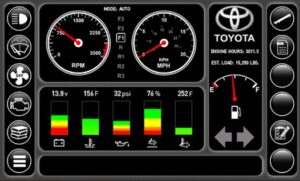
1. What Does A Car’s Forklift Warning Light Mean?
Ans: Your car’s dashboard will display a miniature image of a forklift truck as the forklift warning light emblem.
2. Why Does The Warning Light On The Forklift Come On?
Ans: It comes on to alert you that there may be an issue with the gearbox, which is what allows your car to change gears.
3. Does Having The Forklift Warning Light On Constitute A Major Problem?
Ans: The possibility exists. It’s important to pay attention since even though low gearbox fluid might occasionally indicate a larger issue.
4. Can I Disregard The Forklift’s Warning Light?
Ans: It highlights potential issues that could result in expensive repairs or accidents, so ignoring it is not a good choice.
5. Can I Address The Issue With The Forklift Warning Light On My Own?
Ans: Although you can check the fluid levels in your automobile, it’s safer to have a qualified mechanic look over and fix any deeper problems.
Conclusion:
You should not overlook the forklift warning light symbol on your vehicle. It acts as a watchful messenger, alerting you to any transmission-related issues that may jeopardise your safety and the performance of your car. A smooth, trouble-free voyage can be ensured by comprehending its significance and swiftly resolving the problems. Whether the problem is a straightforward one like low gearbox fluid or a more complicated one like a gearbox issue, acting quickly and getting professional assistance when necessary can keep your car on the road and you safe. Therefore, keep in mind that the next time you see the forklift symbol illuminate on your dashboard, it is your car’s way of signalling to you to pay attention because something needs your attention.


